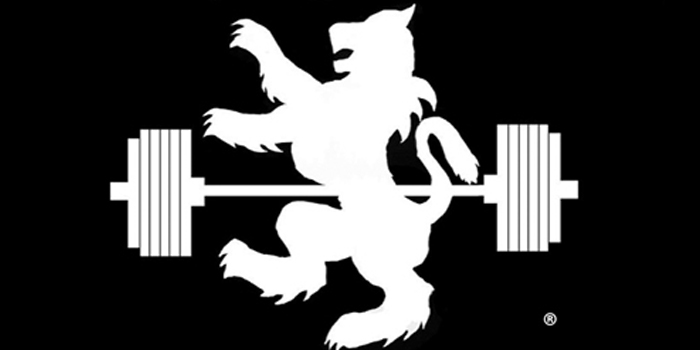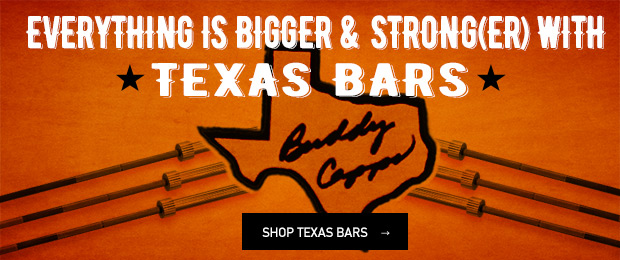
[Dave Tate:] Listen, Erik. You use and promote our equipment. You attended our seminar, the elitefts Learn to Train Seminar 3 last year. Hell, we even published your write-up from the seminar. I can’t have you floundering in the deadlift. It makes you look bad, and it makes us look bad, too.
— Excerpt from "The Deadlift Training Secret No One Talks About"
Training Texts
Texts are a tricky thing. The receiving-end experience can run the gamut from extreme laughter to ballistic annoyance, while along the way the recipient is sometimes fortunate to encounter a serendipitous string of the written word that is nostalgia-producing.
RECENT: Our Children, Athletics, College, and Memories
I frequently receive training questions via text, and they almost always make me smile. The knowledge that someone is thinking of me must release some primal-level endorphins, but it is doubly satisfying to know someone respects your advice and opinion on training and lifting technique.
My middle son sent the text last week — just a video of him deadlifting in our garage gym sans any other words. Later that evening, he explained his impetus for sending video, and we discussed in detail one of the mistakes we discovered he was making at the start of the pull. Parts of that discussion influenced this topic.
Deadlift technique is critical for beginners and advanced lifters alike. The three don’t’s I reference in this article are technique-killers and make for a short training career.
Don’t Roll the Bar Into the Starting Position
Mastery of starting strength is one of the keys to a strong deadlift. To maximize starting strength, the lifter must initiate the pull from the proper position. Success is about leverage; bar placement and positioning at the onset of the lift is crucial.
Most lifters can achieve the correct initial shin placement relative to the bar by starting with the bar at mid-foot (i.e., not touching the shin and certainly not way out over the toes).
Although some acclaimed lifters can successfully roll the bar into position before initiating the pull, the downside of mistiming the roll — where the lifter starts pulling when the bar is too far away from the shins — is severe. It can put any lifter in a forward-compromised position, making it excessively challenging and even dangerous to complete the lift.
In the deadlift, the lifter should be leaning his weight backward while pulling through the heels (driving them through the floor) while keeping the bar as close to his body as possible is crucial. Something is wrong if the weight is pulling through the balls of the lifter’s feet.
Don't Use Straps
I am old-school, which is to say, I am old, but I still remember my uncle’s words from when I was a 13-year-old trainee: “If you need to use straps, the weight is too heavy for you.”
The deadlift is an excellent exercise for building grip strength. Don’t cheat yourself, especially if you are an early trainee. The grip, forearm, and wrist strength will carry over and benefit all lifts and all other athletic endeavors. Initiating and maintaining tension is essential to the deadlift, and choking the hell out of the bar helps the entire chain engage.
If I were a beginning lifter again, I would work hard to learn to utilize the hook grip. It is an excellent way to protect your biceps and back, but it does require a little grit and hand conditioning. elitefts has a great video, “Benefits of Hook Grip Deadlift with Ben Pollack,” on their YouTube channel – I highly recommend you watch it.
If you are a beginning lifter, leave the straps in your gym bag for the time being. Train in a gym where you can use chalk and work that grip!
Don’t Snap Your Elbows at The Start
Out of everything I have ever written for elitefts, this section may be the least controversial. The most troubling aspect of the practice of snapping your elbows at the onset of the lift is that some of you don’t realize you are doing it, and, worse still, some of you have been told you are doing it and refuse to address and correct a horrible habit.
If you are snapping your elbows at the start of the lift, you are navigating a perilous road of which there are zero long-term benefits. That little snap at the beginning of the lift may assist you with getting your first 135-pound pull off the ground, but you are flirting with both elbow joint problems and biceps tears.
At the start of the pull, the lifter’s arms should be straight with their hands acting like hooks, holding onto the bar. Ideally, the lifter should remove all the play in the bar (between the sleeve of the barbell, plates, and collars) by pulling on the bar slightly before initiating the pull. The lifter should not jerk the bar off the floor, but instead, pull the slack out of the bar at the start of the lift.
Pulling the slack out of the bar also allows the lifter to pull the hips down slightly, bringing them into a position of optimal leverage.
If you only take one bit of wisdom away from this article, please follow this advice to ensure a long and healthy life for your biceps muscle and your elbow joints.
Get in The Proper Mindset and Pull
Deadlift training is a marathon, not a sprint. To achieve success, I have found it immensely helpful to listen to those who have navigated these roads before us, while learning from dozens of years of trial and error to determine the optimal training methods and training techniques.
No matter how educated we become, there is always room for improvement.











To go along with the straps and elbow-snapping point, I would add to always stick with a double overhand grip. The risk of bicep tear is just not worth the couple extra pounds. On top of that, most people who do an over/under grip never change it up, and it's just a completely unnecessary way to cause hip/back problems, as your torso will invariably rotate, or you will cause muscular imbalances by only ever resisting that rotation on one side.
Before pulling the slack out of the bar, focus on getting your belly between your thighs. This simple "do" will help set your lower back into extension more effectively than thinking about your back.